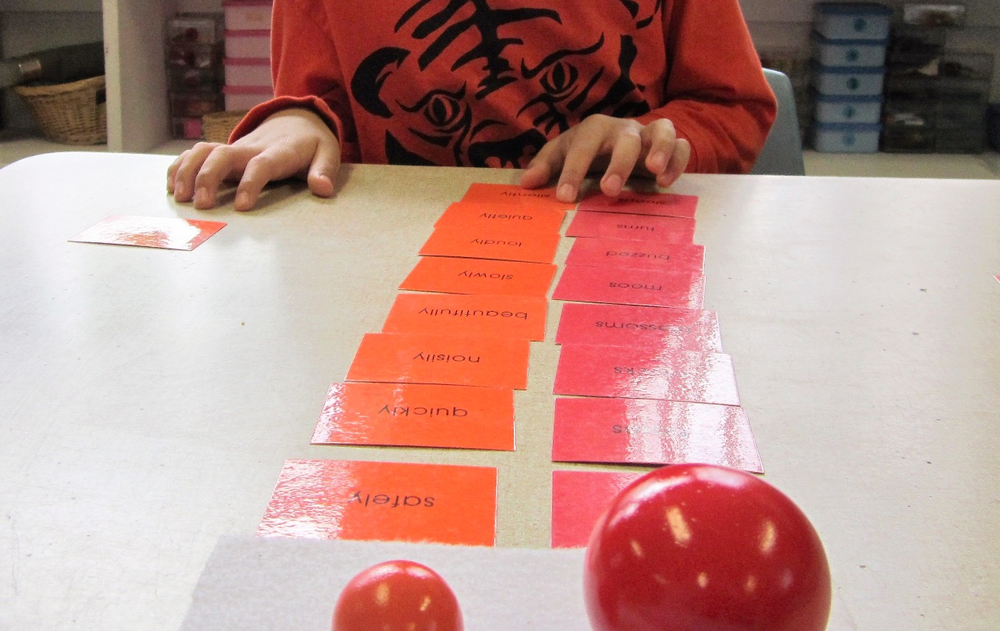
Do you remember learning grammar in Elementary school? Did you memorize the definition of a noun (" a person, place, thing or idea,") separate from any real application? Did you learn that a verb was an "action word?" For many of us, grammar was something we learned by itself, distinct from the books we wanted to read or the stories we wanted to write. But grammar isn't its own thing– it's a representation of the rules most children enact all the time. As children learn their native language, they internalize the rules unique to that language. Learning grammar, then, as its own discipline, allows children to develop a deeper appreciation for written and spoken language, to master and manipulate it in their own communication.
Montessori teachers introduce grammar lessons in the Early Childhood classrooms, first as sensorial experiences that link the nomenclature of grammar to physical experiences. The initial Noun Lesson, for example, is simply a series of small slips of paper labeled to match a set of small objects. Matching the objects and labels, the teacher describes for the child that, "Nouns are naming words." The initial Article Lesson presents the child with a small collection of similar items, four or five clips and a button, for example, and labels that read "a" and "the." By matching the "a" labels to each of the clips and the "the" label to the single button, children learn to distinguish the uses of "a" and "the." The initial Verb Lesson is a simple game of charades, during which children enact the verbs written on a set of cards. The initial Adjective Lesson asks children to walk around the classroom finding increasingly better-described items. "Please bring me a triangle." "Oh! This is not the triangle I'd hoped for. Please bring me a blue triangle." "Oh, this is not the blue triangle I'd hoped for. Please bring me the large blue triangle." "Oh, this is not the large blue triangle I'd hoped for. Please bring me the large blue isosceles triangle." In each of these early lessons, children learn to associate the nomenclature of grammar to the use of that part of speech. In this model, even the seeming abstract qualities of these labels is made concrete and, therefore, meaningful for the young learner.
As learners are ready to read independently and demonstrate more interest in thinking about language as a tool to be manipulated, teachers might introduce the Grammar Symbols. For each of the parts of speech the child has learned, Montessori environments offer a symbol. A large black triangle represents nouns. A large red circle represents verbs. Other parts of the noun family (articles, adjectives and pronouns) are represented with distinct triangles of their own, while the adverb is represented by a smaller orange circle. Children practice representing simple phrases and sentences through combinations of these symbols, correcting their own analysis by assuring that each available symbol finds a place in the representation. As children master simple phrases, they are offered more complicated ones, and, in later Elementary, find an affirming challenge in translating excerpts from great writing into symbolic representations.
Understand grammar allows children to dissect and consider literature and speech as its own discipline, to analyze communication and create elegant writing of their own. It doesn't have to be tedious or disconnected as many of us learned it in childhood. Rather, like the rest of the Montessori materials, the grammar lessons match children's development where it is and engage their learning based on their own innate curiosity.
#Grammar #Language #Primary #FirstPlane #ForParents #ForTeachers #Curriculum #SecondPlane #Elementary
